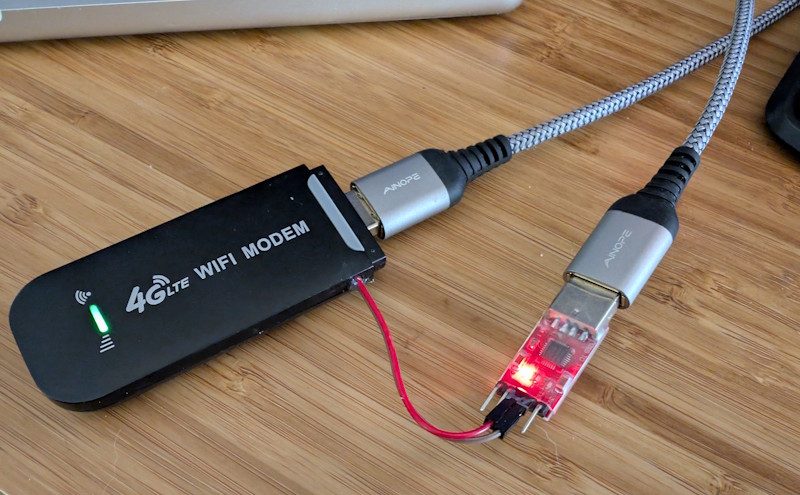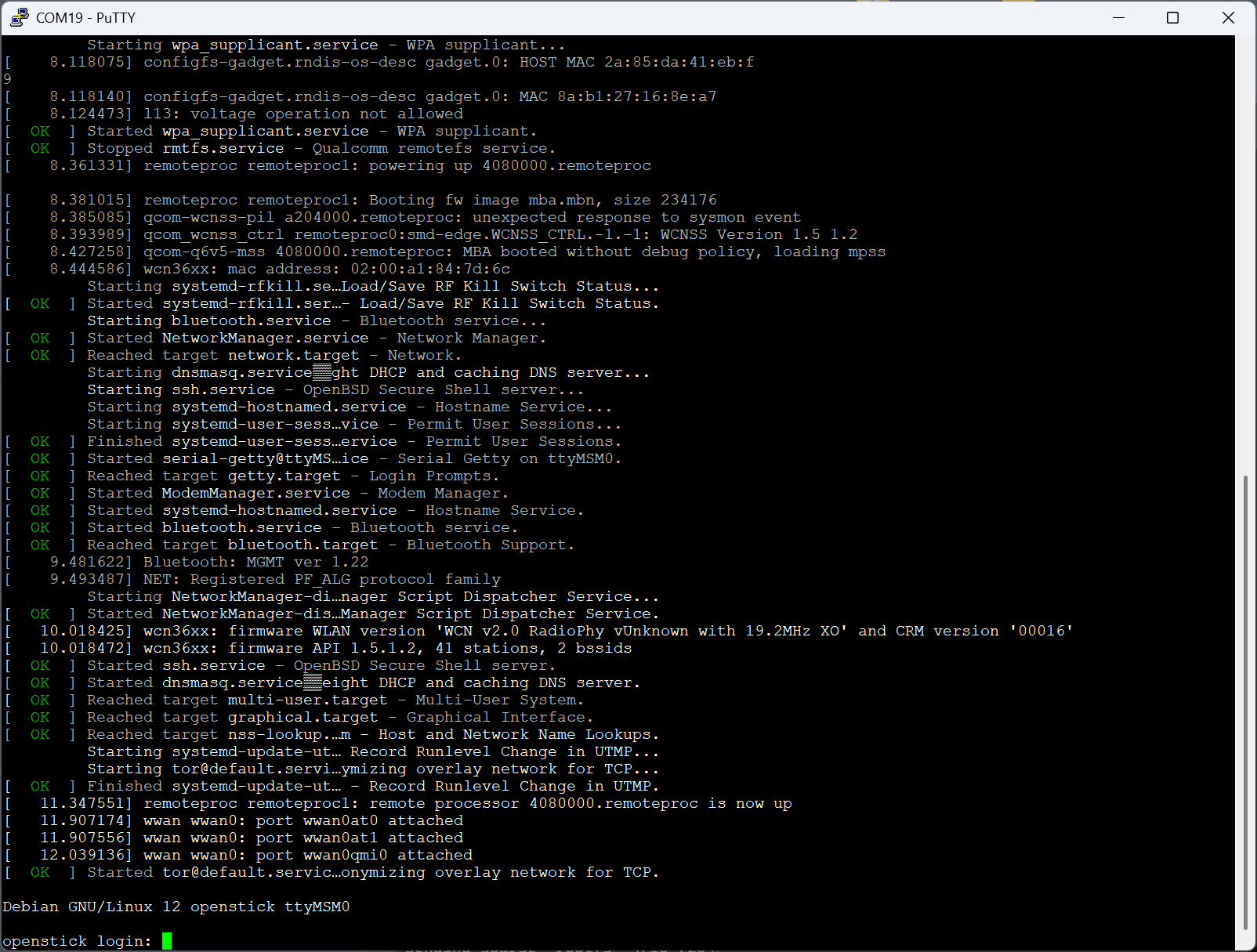What do I do with old Android phones that I’d like to keep around for testing purposes, while no longer worrying about the long-term fate of the lithium battery inside them? Here’s what:
I take the battery out, make sure it’s fully discharged, and surgically remove the controller logic board from the battery (don’t try this yourself unless you know exactly what you’re doing).
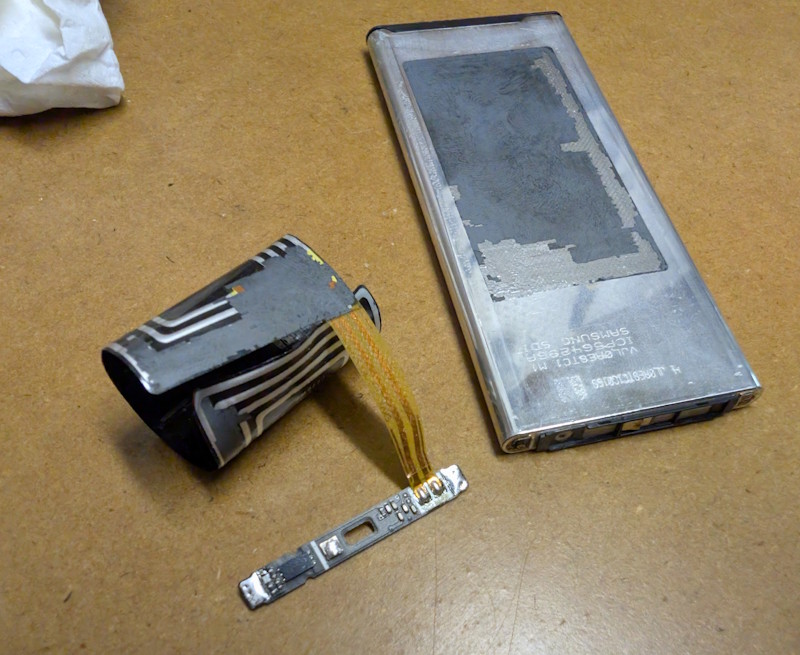
I then solder this PCB directly onto the battery terminals in the phone, and finally solder my actual power inputs onto the positive and negative pads on the underside of the PCB.
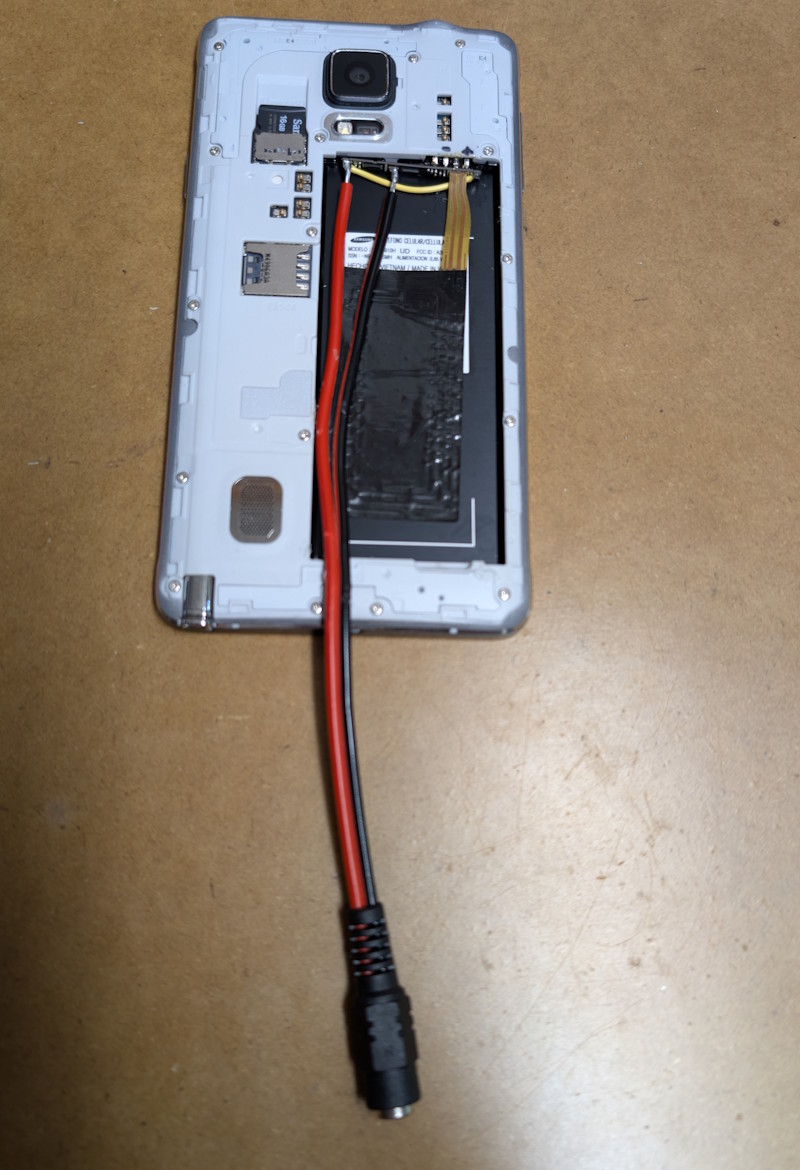
The above example is a Samsung Galaxy Note 4, still plenty powerful for all kinds of development and testing purposes, and is now usable without a battery! I opted to use a cheap standard barrel connector for my power cable, simply because that’s what I had on hand, and also to emphasize that it must be connected to a proper power supply that outputs ~4 volts and is capable of at least 2 amps.
Here is the Note 4, running off a 12V power supply, through a cheap adjustable buck converter that is tuned to output exactly 4.0V, which makes the phone believe the battery is 85% charged.
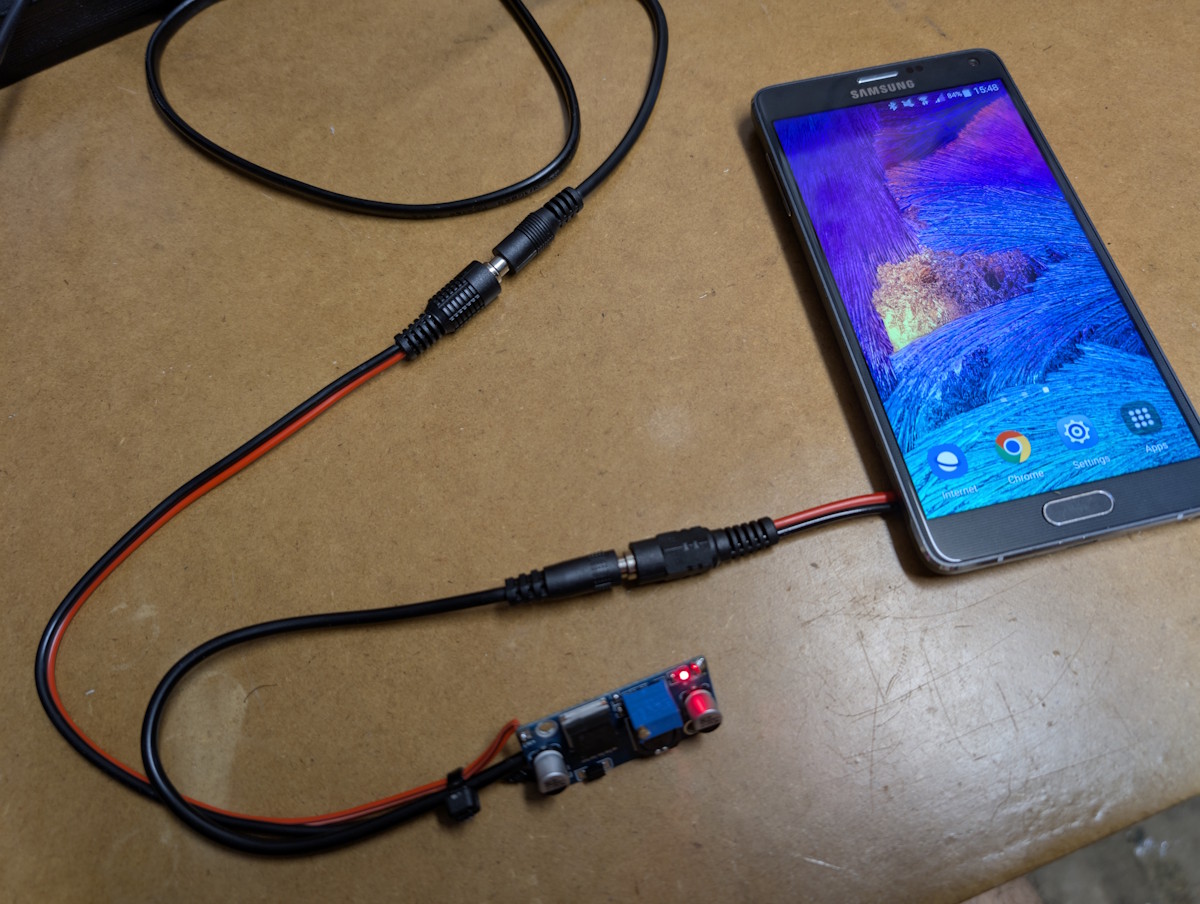
Speaking of “Android” devices, I had a bit of fun playing with a couple of these intriguing things:
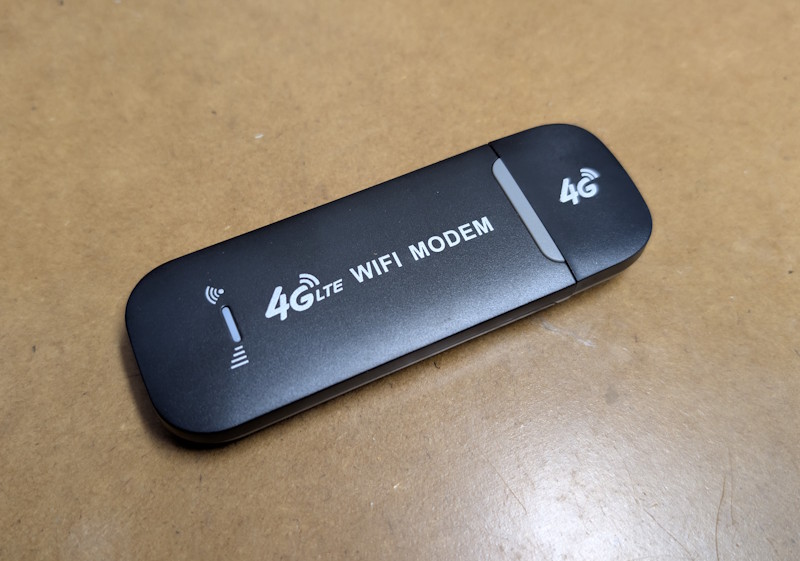
This is an LTE/WiFi dongle, which lets you insert your SIM card that has a data plan, for when you want to connect to the internet from your laptop on the go. But under the surface, there are several things about this dongle that are very interesting indeed:
First, this stick is basically a fully-fledged Android device on the inside. That’s right — it contains all the internals of a low-end Android phone, cleverly packaged into a USB stick form-factor.
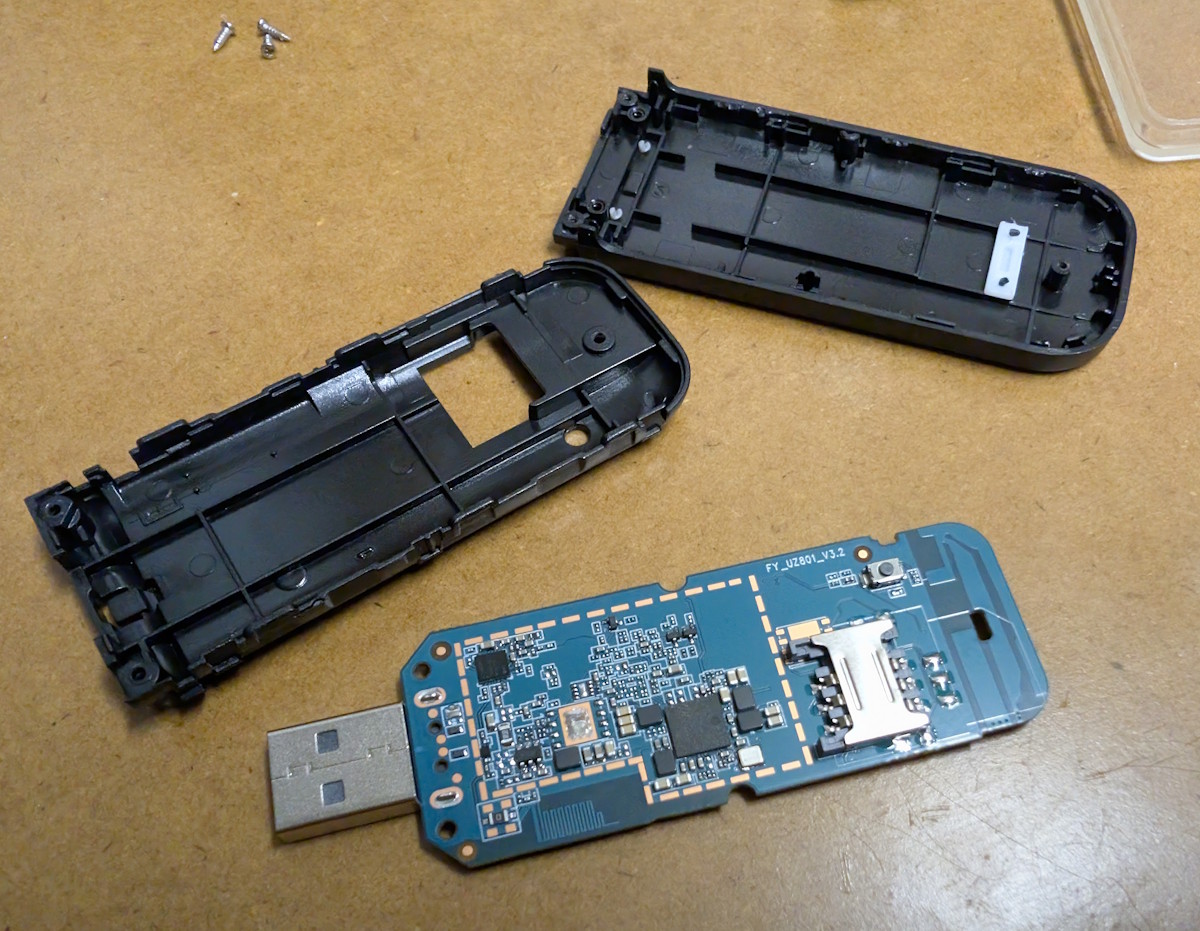
Another interesting thing is the price: at the time of writing, I was able to obtain several of these devices for about $8 each from AliExpress, which is an incredible value for the functionality you can unlock, because:
The final interesting thing about these devices is that they’re very hackable. In fact, there’s an entire community (because of course there is!) that has figured out how to load a completely standard Debian distro onto this stick, with all the bells and whistles that provides, including USB gadget capabilities, allowing you to turn this stick into any type of USB device of your choosing, such as a mass storage device, or an HID keyboard (à la Rubber Ducky, except for 1/10th the price), or an RNDIS network interface (which can capture and record packets), or any number of other types of gadgets, all while still allowing you to “log in” to it via its WiFi hotspot or LTE modem.
I went a little overboard and soldered some wires onto the UART pins, then routed the wires around the metal shielding so that they’d stick out of the plastic case.
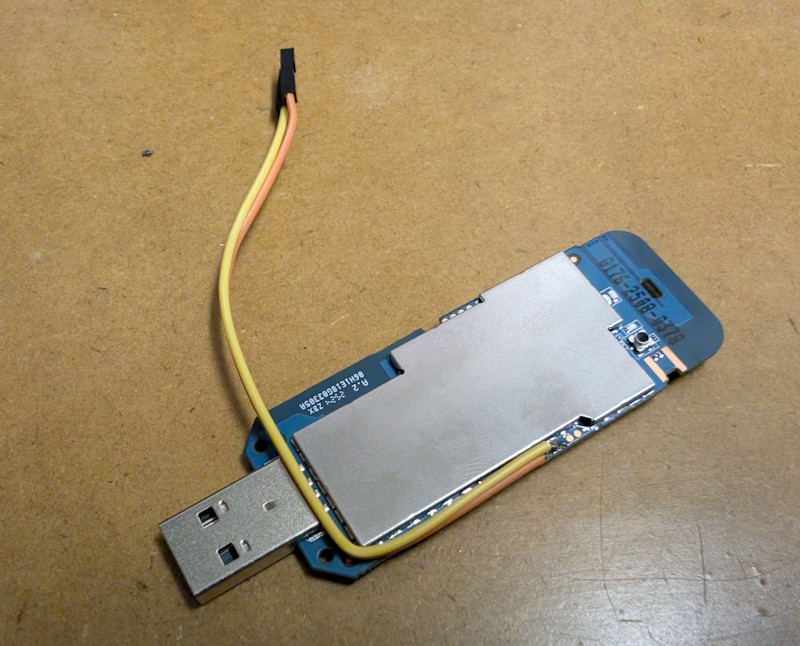
I then put some hot glue over the wires and smooshed the plastic case over it, so that the wires are nicely secured. And now I have a nicely debuggable platform for doing further tinkering with this amazing little stick!
